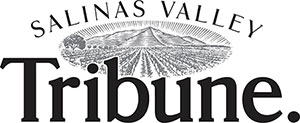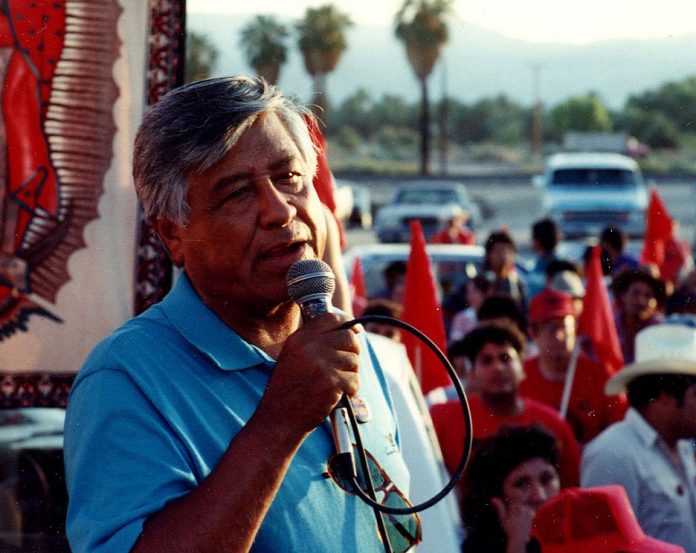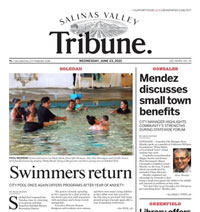More than three decades ago, Cesar Chavez, founder of the first successful union for farmworkers, predicted a future in which the cities of California would be run by people who looked like him.
“History and inevitability are on our side,” he said in one of his best-known speeches, an address to the Commonwealth Club in San Francisco. “The farmworkers and their children, and the Hispanics and their children, are the future in California.” In a tacit acknowledgment that his union had already lost strength, he said, “regardless of what the future holds for farmworkers, our accomplishments cannot be undone.”
His bittersweet vision proved prophetic: The legacy of the man born 94 years ago this week is in the cities, not the fields.
In Delano, the central California city Mr. Chavez moved to in 1962 with the audacious goal of forming a labor union for farmworkers, the mayor, Bryan Osorio, is a 25-year-old son of Mexican immigrants. He returned to his hometown after graduating from the University of California at Berkeley and calls himself the first “progressive” mayor in a city wedged between the districts of the Republican Representatives Kevin McCarthy and Devin Nunes.
In Coachella, 26-year-old Neftali Galarza won a City Council seat and celebrated around the corner from a historic building, the union headquarters where Mr. Chavez ran strikes that captured national attention in the 1970s. In February, the Coachella City Council made history with a law co-sponsored by Mr. Galarza that temporarily requires an additional $4-an-hour “hero pay” for essential workers in grocery stores — and in the fields.
That is the good news. Last week the U.S. Supreme Court heard a case that seems likely to undo one of the last significant vestiges of the once-powerful United Farm Workers union that Mr. Chavez founded. The justices heard a challenge to a key piece of the 1975 California law that establishes farmworkers’ rights to protected union activity. The court seemed poised to strike down the regulation that allows union organizers to talk with farmworkers at their workplace before and after shifts and during lunch.
In a way, it hardly matters. The landmark California Agricultural Labor Relations Act, hailed as the most pro-labor law in the country, has barely been used for years. U.F.W. membership had already peaked when Mr. Chavez delivered the Commonwealth Club speech in 1984; today the union represents a tiny fraction of the farmworkers in California. Still, across the decades, some small, flickering hope endured. Maybe this year. Maybe some union will commit to the long, hard organizing necessary. Maybe thousands of farmworkers will line up in the fields to cast votes again, as they did in the 1970s, many for the first time in their lives.
The pandemic has something in common with Mr. Chavez’s movement: The crisis has made farmworkers visible. The impact of Covid-19 forced people to see the men and women who harvest their food — “essential workers,” yet essentially unprotected. Many are undocumented, their lack of legal protection now compounded by their vulnerability to the disease. Even if growers take precautions at work, social distancing is often impossible in overcrowded homes and overcrowded rides to work.
Over the past year, as I talked to friends in farmworker communities devastated by Covid-19, they spoke of friends who had fallen ill, relatives who died, families that grieved. I had spent the better part of a decade researching and writing about farmworkers and their history in California; now they were in the news, but there seemed nothing new to say. The pandemic was one more sad chapter of their story.
Eladio Bobadilla was 11 when he moved from Mexico to Delano, where his parents worked in the grape vineyards. Undocumented and frustrated by his lack of options, Mr. Bobadilla almost dropped out of high school; eventually, he became a historian of immigrants’ rights.
In some ways, he noted last week in a talk about Mr. Chavez, conditions in the fields are worse than they were decades ago. In real dollars, many farmworkers earn less now than they did in the 1970s. Before Mr. Bobadilla’s parents retired, they had to bring home the dirty trays they used to pick grapes during the week and wash them on their day off. They did not know, nor did their son, that was against the law; they knew only that they would lose their jobs if they did not comply.
“The struggle continues,” Mr. Bobadilla said. “It’s still a deeply exploitive type of work. It doesn’t have to be undignified work. It doesn’t have to be cruel work. It’s always been difficult. But it doesn’t have to be cruel.”
On the day President Biden took office, the White House released a photo showing a bust of Cesar Chavez prominently displayed in the Oval Office. The first lady is expected to attend an event on March 31, Mr. Chavez’s birthday, a California state holiday, at the old U.F.W. headquarters in Delano, now a historic monument.
Symbols are important. But they are not enough. Just as the legacy of Mr. Chavez needs to be more than the name of the Delano high school that Mayor Osorio attended, the commitments to “equity” and “a new normal” need to mean more than tributes to the bravery of essential workers.
Perhaps the administration should look not to the past but to new models, like the worker-driven programs established by the Coalition of Immokalee Workers and the Fair Food Program, which have made real strides for workers in Florida.
It will be up to the next generation, the one Mr. Chavez presciently foresaw, to make change, not just in the cities but also in the fields. Not to re-create failed guest worker programs, but to find ways to bring dignity and a living wage to the millions of American farmworkers.
Copyright 2021 The New York Times Company














